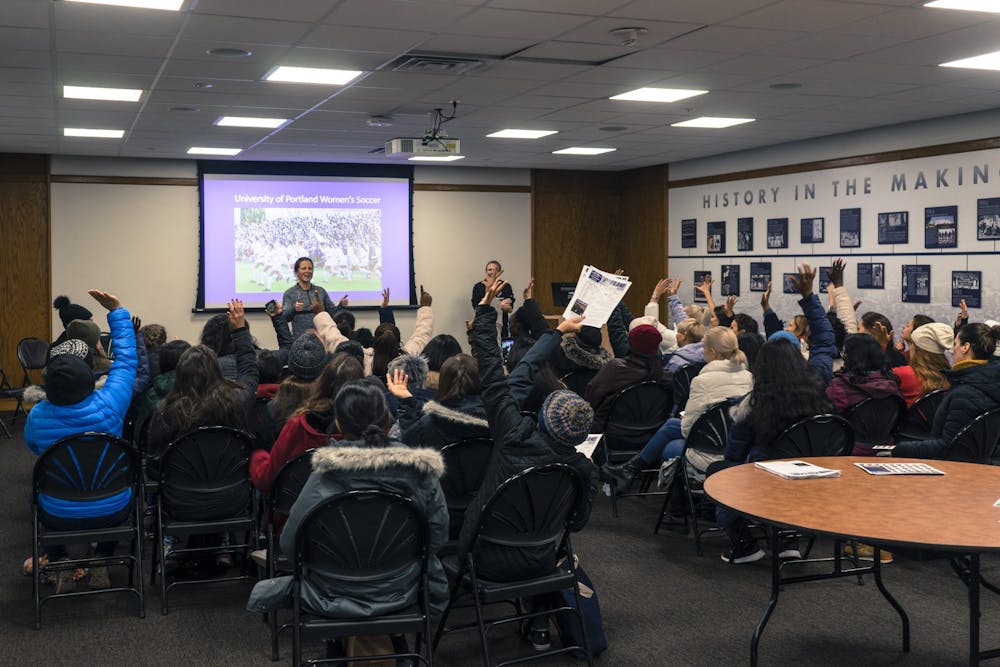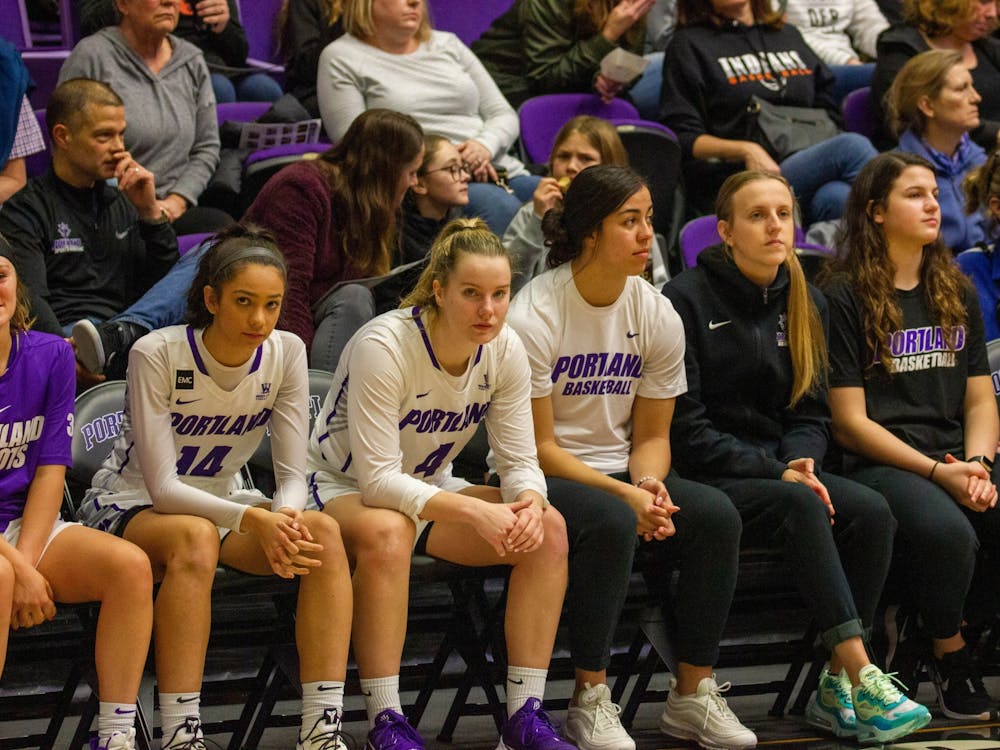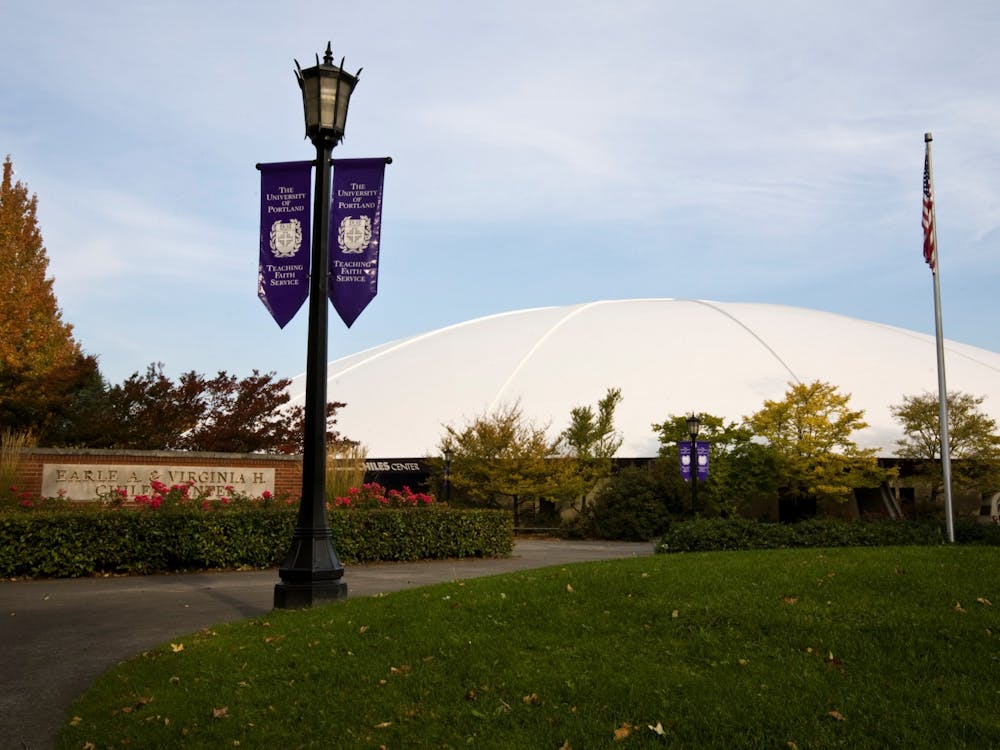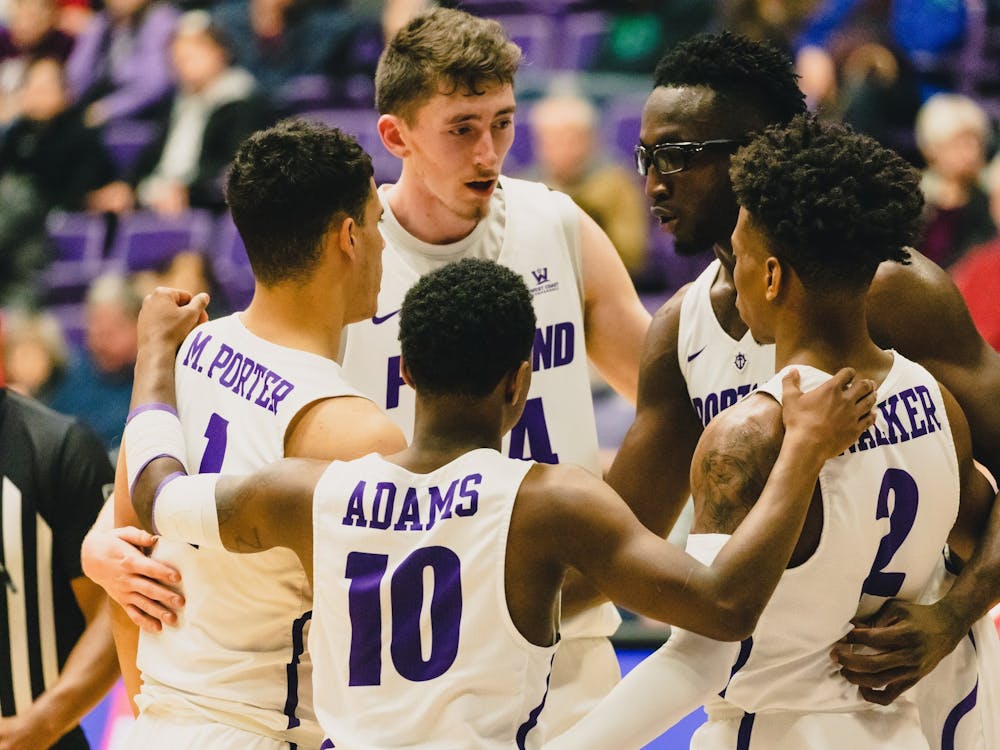It’s 5:30 p.m. on a Saturday when almost 50 women walk through the doors of the Hall of Fame Room at the Chiles Center. Some are smiling but others are trying to warm up on what is surely another rainy fall day in Portland, Oregon. Every one of them comes from a different place around the world, from Australia to Brazil to South Africa. But despite the differences, there’s one face universally recognized around the room sprawled out on a poster: Megan Rapinoe.
“Did you know she’s in Eugene right now?” one journalist says loudly, her eyes wide and mouth gaping open. “I can’t believe we missed her by a day!” She kicks her leg up in an ‘Aw, schucks’ kind of manner.
They aren’t just sad they missed out on Rapinoe because she is cool but because they missed out on an opportunity to talk to one of the most influential women's soccer player in the world. It's because they’re a group of 47 female sports journalists from all around the world, traveling across the United States to network with one another and learn more about how sports work both in the U.S. and in other countries. The University of Portland happened to be one of those stops — another chance for them to learn more about the history of women’s sports in Portland.
The group is a part of the International Visitor Leadership Program, an exchange program that is a part of the Department of State in the U.S. The IVLP is the oldest state department sponsored professional development program, with this year being the first time it has sponsored female journalists. The program provides the opportunity for journalists to meet others in the same field of work making strides to break the glass ceiling in their country while learning more about the United States and their sports culture.
The group started their journey in Washington D.C. on Nov. 4 and will travel to a variety of locations up until Nov. 22. Oregon is one of their first stops before they split off into five different groups, going to cities such as Atlanta, Cleveland, Dallas, Denver, Indianapolis, Kansas City and Orlando. The program concludes in New York with a networking opportunity hosted by Bleacher Report.
The women have traveled to various places in Oregon, including a trip down to Eugene to speak with Lori Schonz, veteran
sports journalist and professor at the University of Oregon School of Journalism, and a visit to Columbia Sportswear where they spoke with Oregonian sports reporter Jamie Goldberg and KOIN 6 anchor A.J. McCord. They also had the chance to visit Providence Park and talk with Portland Thorns head coach Mark Parsons.
But Amy Barss, the director of international visitors and training programs at World Oregon, knew that a UP soccer game had to make the itinerary. Portland proudly calls itself Soccer City U.S.A., and the history of talented female players such as Megan Rapinoe, Christine Sinclaire and Sophie Schmidt coming through The Bluff is a vital part of that identity. For Barss, it was important that they understood the impact women’s soccer at UP has had on Portland.
“For a long time there wasn’t a professional soccer team (in Portland) and … I really have always felt was on the national stage,” said Barss, who grew up in Oregon but attended her first UP soccer game on Saturday. “We talked about experiential learning and being able to not just see one thing but kind of create a full story for them and so to be able to take them here and to the Thorns, I really think that shows UP and women’s soccer. It’s the full story.”
Barss contacted the University of Portland senior associate athletic director Jason Brough. Brough noted that this kind of group, one sponsored by the U.S. State Department, doesn’t usually come through here. It presented a unique opportunity for athletics.
“I think it’s real special,” Brough said. “The fact that they reached out to us and wanted an opportunity to expose this diverse, international group of reporters to what we’re doing on campus and explain our history and our role in not just women’s sports but sports locally and at the international level. I think that shows one a lot of respect and two a great opportunity for us to share our story to a wider audience.”

The group sat down for a presentation about the history of women’s soccer at UP and were greeted by head women’s soccer coach Michelle French. Instead of just sitting down while French talked like a tired college student at a lecture looking for free pizza, they peppered French with a variety of questions, like she was at a press conference. They then went off to watch the women’s team face off against the University of San Diego in their regular season finale.
The group noticed right away how sports are different in the U.S. than around the world. In D.C., the group had the chance to watch a Washington Wizards NBA game. Cecilia Omorogbe, a sports presenter and producer for Nigeria’s largest independent national TV station, noticed immediately that this was a more organized and immersive experience than in Nigeria.
“We saw that game and what I was able to take from that particular game is the way this game is organized,” Omorogbe said. “In my country, you just go get your tickets, maybe you get your popcorn, and that’s it. But here, there’s just this fan engagement, so to speak. You enjoy every game. The fans get to participate at every little break, they have their gifts.”
Aet Suevari, an Estonian soccer reporter and one of two female journalists in Estonia, concurred, noting that sports aren’t limited to the athletes.
“Sports here seems to be really for everyone,” said Aet Suevari, an Estonian soccer reporter and one of two female sports journalists from Estonia. “I went to a store today (Saturday) and started talking to the cashier and she was like ‘Oh yeah, my mom’s really into basketball and hockey! I’m a massive hockey fan!’ This wouldn’t necessarily happen in Europe.”
The experience of collegiate athletics is also something foreign to them. Sports aren’t played at the university level except for in the U.S. Omorogbe said this was the first college soccer game she had ever attended.
“As a sports journalist I have never watched a college sport because we don’t really have it in Nigeria,” Omorogbe said. “What we have is just the usual professional league so most of the girls just have academies where they play … the universities don’t have anything like that.”
Some were impressed by the atmosphere. Anjana Senthil, chief sub-editor of the Indian English-language newspaper Sportstar, was particularly amused by the Villa Drum Squad, shirtless, standing in the rain and still cheering on the Pilots, even as they lost 1-0 to the San Diego Toreros.
“To see men cheering women in soccer, that’s something,” Senthil said.
Seeing women be cheered on by men and women alike is something that makes all the journalists proud. It’s the work of athletes like Megan Rapinoe that make them proud to be women working in sports.
“I saw that (she was in Eugene) today, and I was like ’damn it!’” said Suevari. “She’s such an inspiration to all of us, not just the soccer players obviously and soccer fans but also the soccer journalists and I think all women generally.”
One shared connection they had was the struggles they’ve faced as women in a male-dominated field. For them, there is extra pressure to be perfect in a world that expects them to know nothing. Suevari, Omorogbe and Senthil said that every mistake they make leads to harassment on social media that men just wouldn’t get.
“It’s easier for a man to ask a dumb question and get away with it,” Senthil said. “Women cannot. You have to be on the dot. You have to ask the right question, actually get them to know ‘I know this sport, I’m going to talk to you about these things.’”
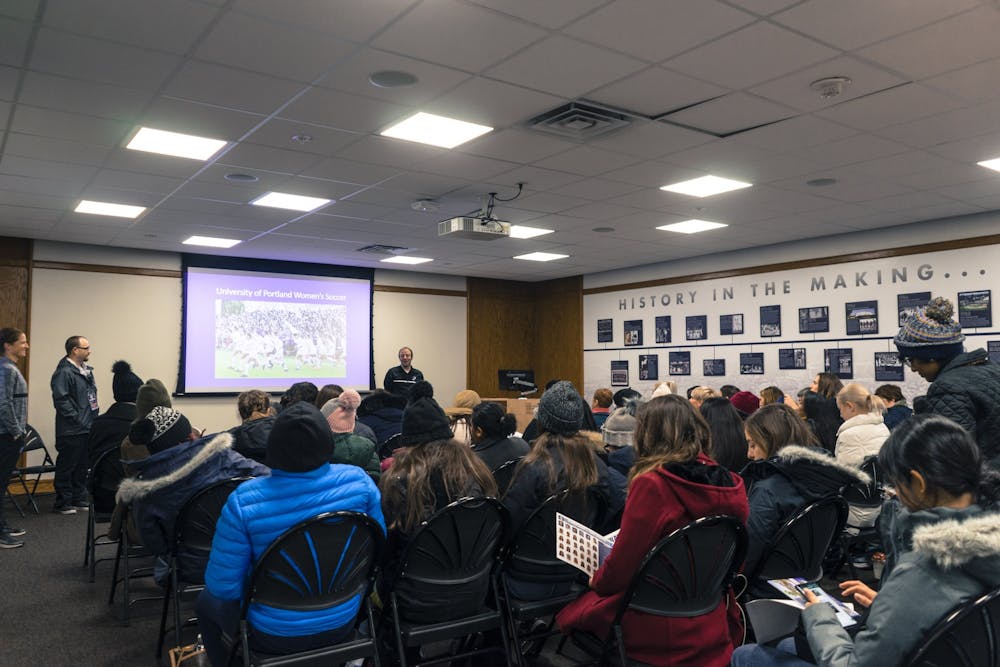
Omorgbe said there’s an expectation that if a sports journalist is a woman then she doesn’t really have much knowledge of the sport.
“I had an experience where I wanted to interview a national team coach and he looked at me like ‘Who are you?’” Omorogbe recalled. “I felt so offended … the fact that they look at you like you don’t know what you’re talking about, especially when they know you didn’t play the sport...there’s just this tendency that you don’t know what you’re talking about.”
Some stories are worse than others. Suevari said she’ll get her fair share of social media harassment and that she’s had to work hard to go past that glass ceiling. Other journalists she talked to have shared horror stories about treatment.
“There’s a journalist going to interview a player, and he doesn’t like the question so he hits her,” Suevari said. “There’s literally things like that, you know, a female commentator with her mic being turned off while she is commentating because she’s a woman and there’s just stuff like that you wouldn’t believe.”
It’s also the jobs in sports that women hold. Omorogbe noted that women are often relegated to being just presenters or announcers instead of analysts. That’s why Omorogbe makes it a point to purposely bring female analysts on her shows. She has even formed a group of women sports journalists who can teach each other about different sports.
“We’ve actually formed a group of women’s sports journalists teaching each other like ‘I know soccer and you don’t’ so we’re actually trying to teach each other,” Omorogbe said. “I look for female sports journalists who understand basketball to come on the show and talk about basketball and do analysis on basketball and not using the guys anymore.”
Despite the struggles they face currently and in the past, the group feels optimistic about the future of women in sports. They look at things like the World Cup, Megan Rapinoe, and even the Villa Drum Squad as glimpses into a future where women’s sports and female sports journalists are more prominent. However, they know it won’t be easy.
“I think it’s going to be easier for girls who come after me, and I really, really seriously hope that it’s the case for some of the other women in my group, that they have broken that ceiling,” Suevari said. “Although, like I said, there are countries where it’s so much harder still and where things are not that simple because it’s just not happening in the level of sports journalism, but also everywhere in their societies.”
Kyle Garcia is the Sports editor for The Beacon. He can be reached at garciaky20@up.edu.



